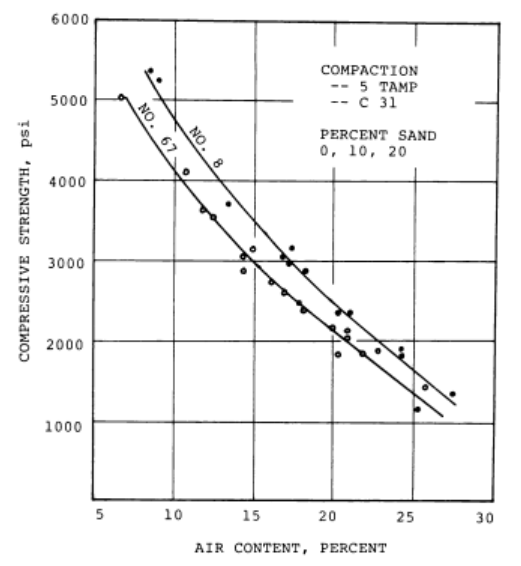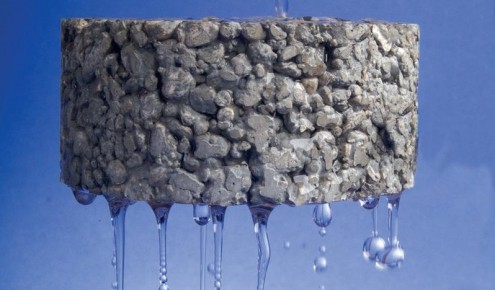Pervious Concrete
Pervious concrete is a type of concrete with a system of interconnected pores allowing water to rapidly drain through. Pervious concrete itself is made up of coarse aggregate that is coated by a thin layer of cement paste, holding the system together. While the compressive strength, void content, and permeability tend to vary depending on the mix design and preparation methods, they are generally correlated with one another.
Applications
The most obvious application of pervious concrete is in any situation where drainage is desirable. Many pavements, such as parking lots, greenhouse floors, swimming pool decks, and parks can be made using pervious concrete. The conversion of these pavements from conventional concrete to pervious concrete will reduce the amount of storm water runoff while also recharging groundwater as it allows the rainwater to infiltrate into the ground.
Additionally, pervious concrete is able to improve water quality by filtering out contaminants. However, due to its low strength, use of pervious concrete is usually limited to pavements subjected only to light traffic. Pervious concrete’s properties are particularly sensitive to the water content, which can change drastically if it is not closely monitored. The open structure of pervious concrete will also need to be maintained as the voids can become clogged with debris, thereby reducing its permeability.
Materials
Pervious concrete generally consists of water, admixtures, coarse aggregate, cementitious material, and little to no fine aggregate. Pervious concrete can be made with a wide range of materials that are generally also used in conventional concrete. The coarse aggregates used in pervious concrete tend to be single-sized or narrow-graded to help ensure the connectivity of the pore system. The use of fine aggregate tends to be limited due to the effect of reducing the porosity and therefore the permeability of the pervious concrete. Cementitious material generally consists of portland cement, but can also include other supplementary cementing materials such as slag, fly ash, and silica fume. Water reducing admixtures are often required since the water to cement ratio is often lowered to increase the strength of the concrete.

